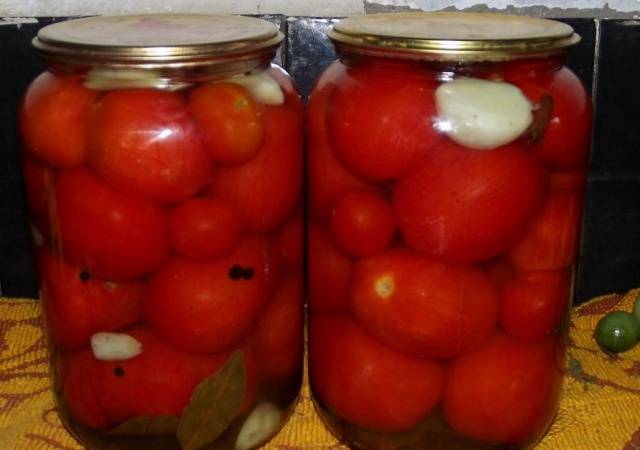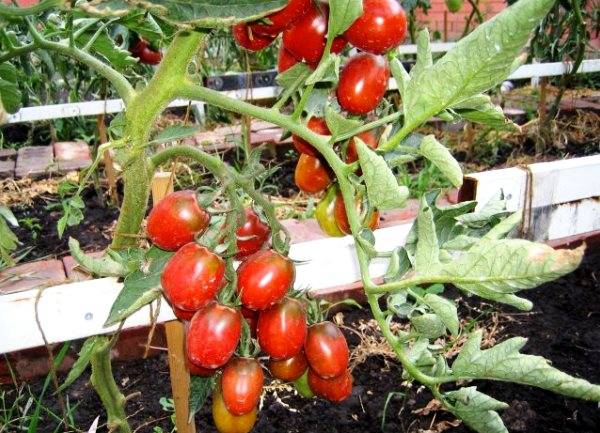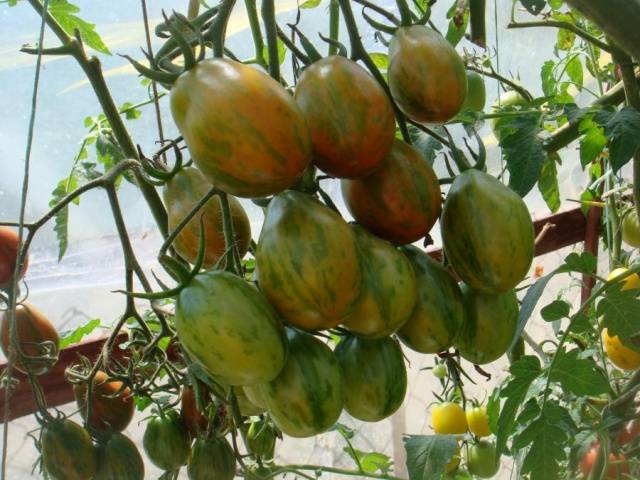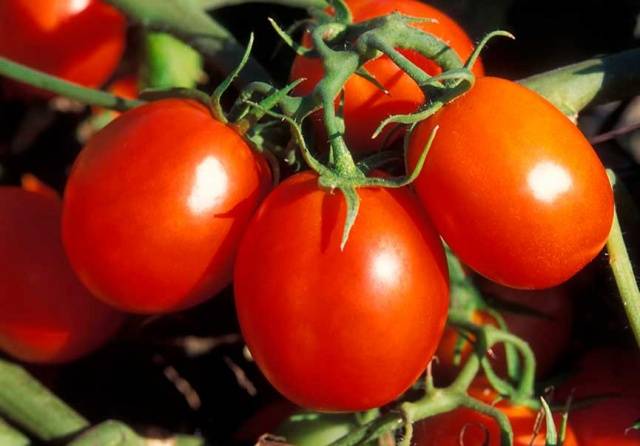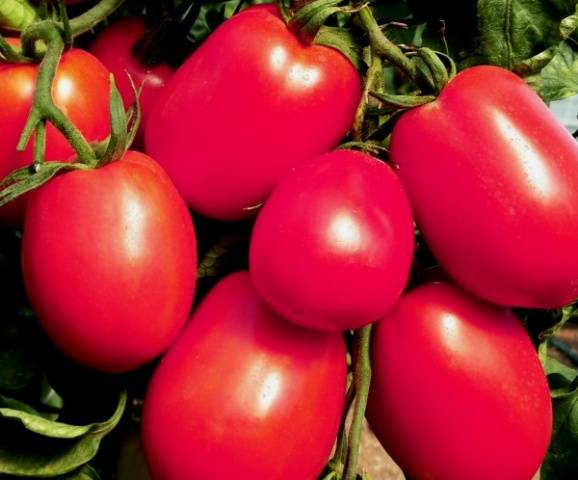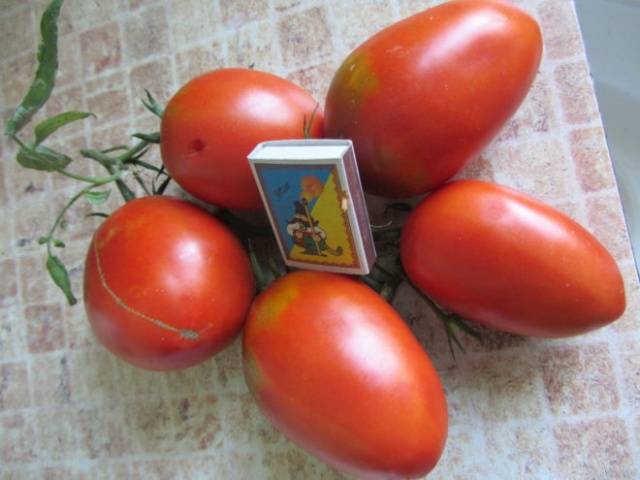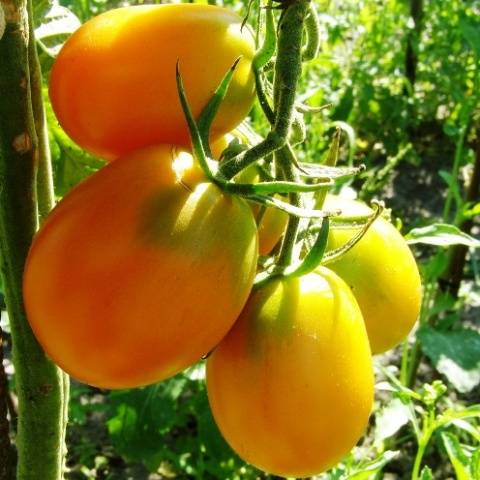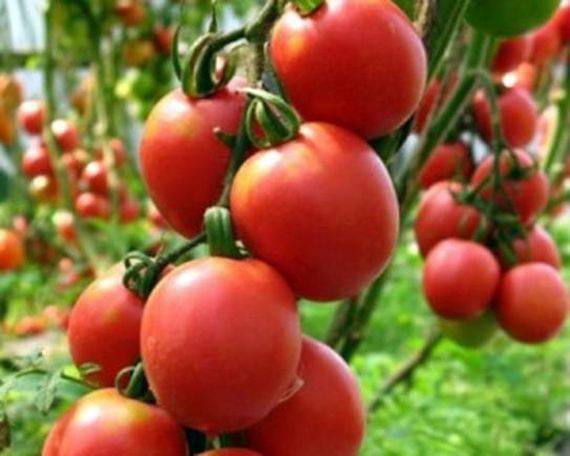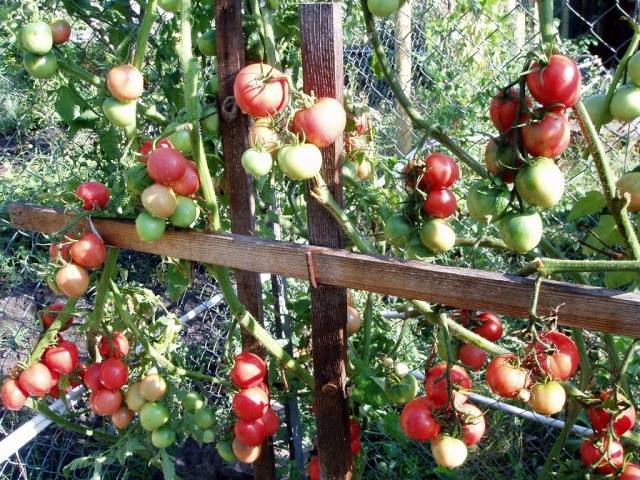Content
You can endlessly admire the bright multi-colored lanterns ripening on tall De Barao tomatoes. They grow on bushes until frost. Brazilian breeders created the De Barao tomato. Tomatoes came to Russia at the end of the last century from Brazil and were immediately liked by gardeners.
general information
The variety is included in the State Register, almost all of its varieties are registered:
- Gold and Orange;
- Pink and Red;
- Black, Royal and Giant;
- Crimson and Black striped.
The difference is not only in the names of the tomato, but also in taste, pulp structure, shape. But all the subspecies are united by the simplicity of cultivation, a stable harvest, and the versatility of the use of fruits.
De Barao tomato bushes are powerful, belong to indeterminate varieties. The yield of all subspecies is stable, one square meter, subject to agricultural technology, gives up to 20 kg of fruits under any weather conditions.
The State Register recommends tomatoes for growing on private plots and on an industrial scale. The variety can be cultivated in open and protected ground.
The height of the bushes is from 2 to 3 meters. The leaves are large. Inflorescences with a large number of ovaries, peduncle with articulations.
To understand what De Barao tomatoes are, you need to know the characteristics and description of the variety, depending on the species.
Varieties of varieties
As already noted, the De Barao tomato variety has several subspecies.
The black
Description
Tomato variety De Barao is indeterminate, mid-season, technical ripeness occurs in 120-130 days from the moment of germination. Growth is unlimited, in a greenhouse it can be about three meters.
Inflorescences are represented by simple racemes with 8-10 fruits in the form of an oval or egg. There are not many cameras, no more than three. In technical ripeness, the fruits are reddish-brown, as in the photo below.
The mass of individual fruits is 40-80 grams. Tomato De Barao Black, according to gardeners, has a dense sweetish pulp. Thanks to the hard skin, they are excellently transported and stored for a long time.
Pros and cons of the view
According to the characteristics of the De Barao Black tomato, the following positive points can be distinguished:
- high productivity;
- interesting appearance;
- great taste;
- versatility of application;
- transportability and keeping quality;
- resistance to late blight.
If we talk about the shortcomings, then these are:
- damage to fruits by black bacterial spot and apical rot;
- the inability of the plant to resist the Colorado potato beetle, slugs.
In addition to just Black De Barao, there is also De Barao Black Striped, here he is in the photo below.
Red
Another of the varieties - the De Barao Red tomato variety, ripens in 120-130 days. It is indeterminate, up to 3 m high. That is why tomatoes are advised to be grown in a greenhouse in order to avoid injury to the bush by winds.
Tomato De Barao Red fruitful variety, reviews of gardeners and the photos below confirm this. One bush, with proper care, will give about 6 kg of tasty and dense egg-shaped fruits.
In technical ripeness, tomatoes are bright red, the mass of individual tomatoes is from 80 to 120 grams.The fruits of the De Barao Red variety, according to gardeners' reviews and description, are two- or three-chambered. Dry matter in them is 5-6%.
If we talk about the application, then in addition to fresh use, the fruits of the De Barao Red tomato (given the description) are most often preserved entirely: the size and dense skin allow, which does not burst either on the bushes or when pouring boiling water.
Dignity
- attractive external data;
- cold resistance and endurance;
- excellent taste properties;
- high transportability;
- long shelf life;
- versatility of use;
- resistance to many diseases and pests of nightshade crops;
- excellent yield.
disadvantages
- The impossibility of growing in open ground in the zone of risky farming due to the middle late ripening period. Greenhouses must be high enough.
- Difficulties in formation: only in one or two stems, all the other stepsons, as well as the leaves, must be constantly removed.
- It is advisable to plant De Barao tomatoes separately from other varieties.
Pink
The plant, like all De Barao varieties, belongs to indeterminate, tall (over 2 meters), varieties with a carpal type of fruiting. Technical ripeness occurs in 115-125 days from planting. Tomatoes are intended for greenhouse cultivation.
The internodes of the De Barao Pink tomato are large, the stems are strong and powerful. Leaves are ordinary, dark green in color. The inflorescences are simple, compact in structure. The first one appears high enough, above 9 or 11 leaves. The following brushes are in three-sheet increments.
Fruits are small, weighing from 50 to 70 grams, in the form of cream. The surface is smooth, the skin is dense, so no cracking is observed. The taste is ordinary tomato. In technical maturity, tomato De Barao Pink according to reviews and photos, bright pink. Fruits for universal use. Plants are resistant to tomato diseases.
Tsarsky
Tomatoes of this variety are mid-ripening (120-125 days), tall (up to two meters). Tomato De Barao Tsarsky is formed, judging by the description, in 1-2 stems, it needs support, tying, pinching.
Inflorescence type - carpal, with fruits resembling cream with a small pipette. The fruits are pale pink in color, with a barely noticeable golden crown at the peduncle.
The fruit has a pronounced tomato flavor. The weight of tomatoes is 50-100 grams. Fruiting is extended, the harvest is harvested until frost. Tomato De Barao Royal is resistant to disease.
Gold
This variety is the result of amateur selection. The plant is late-ripening, indeterminate, which means that it does not limit itself in growth. It can only be grown in greenhouses.
Vigorous bushes with lots of dark green leaves and stepchildren. This complicates the care, since it is necessary to constantly pinch the tomatoes. Experts and gardeners advise leaving only one stem.
The fruits of the De Barao Golden tomato, according to reviews, have an oval plum shape. The surface is smooth. The weight of tomatoes is from 79 to 90 grams. The taste is great. In technical ripeness, the fruits are golden lemon-colored.
The variety is fruitful, up to 6.5 kg of fruits are harvested from one bush with proper agricultural technology. This is also achieved due to the resistance of tomato to diseases of nightshade crops. As gardeners note in the reviews, De Barao Golden tomato practically does not get sick with late blight.
The yellow fruits are very useful. Nutritionists note that they do not cause allergies, they can lower blood pressure and cholesterol levels. They contain potassium, iron, magnesium, cobalt and zinc necessary for humans.
Orange
This variety was entered into the State Register only in 1999. Despite the short cultivation period, the De Barao Orange tomato has already fallen in love with Russian gardeners. Variety of indeterminate type, powerful, late ripening. The only thing the originators pay attention to is that tomatoes do not have time to ripen in the open field, it is recommended to grow only in greenhouses.
There are not too many leaves, they are saturated green. The structure is common, like all varieties of the variety.
Fruits are medium in size, ovoid, weight within 65 grams, with two or three chambers. The pulp is dense, juicy. Each brush produces up to 8-10 bright orange fruits with a pleasant taste. According to the description (this can also be seen in the photo), the tomatoes are aligned in weight and shape.
Tomatoes are transportable, with a long shelf life. The purpose of the fruit is universal: fresh, for whole-fruit canning, salads, making juice.
The yield is high (up to 8 kg per plant) if the bushes are grown in one stem. Plants hardly get sick with late blight, even if the summer is rainy.
Giant
Description
De Barao Giant tomatoes are distinguished by their capacity, up to 2 meters high. Plants are cold-resistant, shade-tolerant. Recommended for growing in greenhouses. Technical ripeness occurs in 125-130 days.
A plant of the carpal type, on average 6-7 fruits are tied on each brush, sometimes more. Average weight is from 70 to 100 grams. The shape of the fruit is cream. The pulp is dense with two or three chambers. Ripe fruits are red, and the cap is greenish in the area of the peduncle.
Benefits of the variety
The reviews about the Giant tomato are mostly enthusiastic. Gardeners call the main advantages:
- Stable yield.
- Great taste.
- Versatility of application.
- Long shelf life and transportability.
- High resistance to diseases of nightshade crops.
Conclusion
There are many varieties of De Barao tomato. This pleases gardeners who like to experiment on their plots. We have tried to describe some of them briefly. The photo below shows another interesting variety from the same series, De Barao Raspberry.
It is important to note that all subspecies are fruitful and tasty. The variety can be grown in any region of Russia, but the best results are obtained in greenhouses. The main thing is to follow the agricultural techniques adopted for indeterminate varieties.
